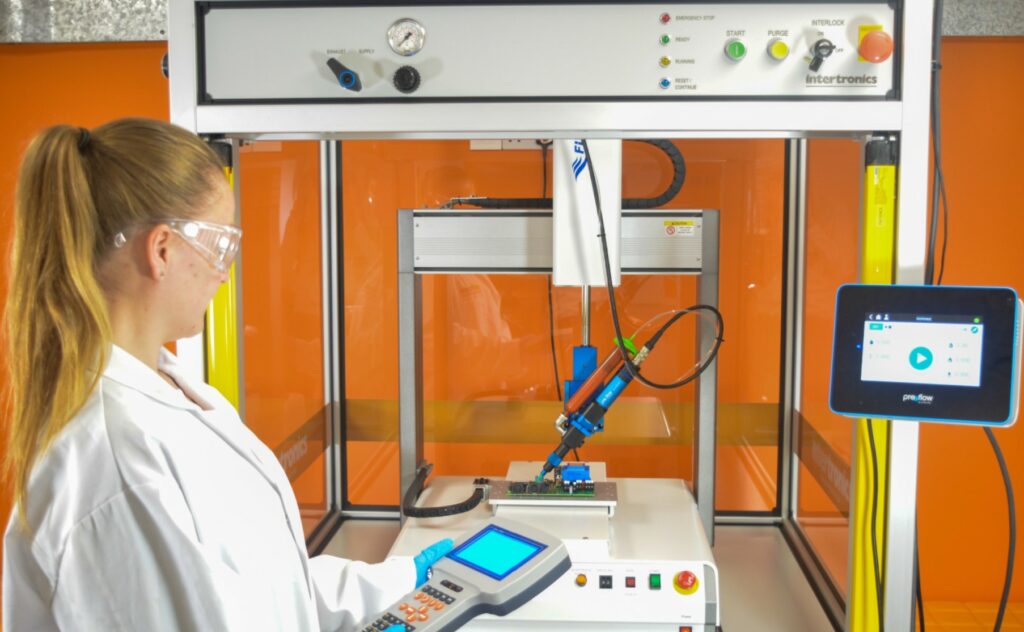Peter Swanson, Managing Director of adhesives and dispensing equipment specialist Intertronics, shares a hypothetical worked example that reflects the ROI (return on investment) of introducing a dispensing robot for an electronics CEM.
In this contributed piece from Intertronics, Peter Swanson proposes the following imagined scenario from the perspective of a CEM managing director: one who is beginning to question the labour costs in his company.
“I am the managing director of an electronics CEM (contract electronics manufacturer). We make 1,000 potted electronics assemblies per week – and regularly 200 per day. This is achieved manually by experienced operators. Pat is my best operator, she’s been with me the longest time.
“Some weeks, about 2.5% of these are rejected after potting. Each one costs £50, so I lose £1,250 that week. The potting compound has to be mixed by hand, and dispensed into the assembly without voids or bubbles. It’s a bit of a messy and tricky job, in an area of the factory that I’m not proud of.
“Sometimes I have capacity problems, when the operators, especially Pat, are on holiday or sick. I worry about Pat, as she has talked to me about reducing her hours or retiring. It would be better if I could de-skill this operation to take some risk out of it.
“If I invested £30,000 to £40,000 in a robot to mix the potting material and apply it automatically, we could get through all 1,000 units in half a day each week. We would still need an operator to load or unload the robot, but that could be done with someone less experienced.
“We think that the reject rate would go down to about 1% – and, with the right amount of work, we could get it lower as we reduce the process variables. There would be less handling of the chemicals, thus improving the health and safety of my team.
“Installing this automation would allow us to reallocate 4.5 days per week on labour to something more useful, saving us about £35,000 per year in labour overhead on this assembly. With the savings on rejects of about £20,000 per year, a really simple ROI sum says that we would pay off the investment in less than 12 months.
“Our customer for this product has been making noises about raising the quantities from 1,000 to 10,000 per week. If that happens, we would need to hire 9 more people and train them, but in this labour market, that will be really difficult. I need to keep the people I have by giving them less monotonous, more engaging work. So if we get the increased order, we would have to make the robot investment.
“However, I am worried that we won’t get the job unless we get our reject rate down. One of my competitors has some of its robots pictured on its website, which makes it look really professional and up to date. Raising our image and brand would be another benefit of investing in automation, although it’s a bit more difficult to put a number on the financial value.
“In conversation with our dispensing supplier, I realised that this level of automation costs much less than I thought – less than my new car! I think we can justify the cost through a fast ROI, deskilling some jobs, motivating our workforce, upping our image, and reducing risk both commercially and in production.”
This is one of our many robotics stories that you can find in our Industrial page. You can also click here for further stories on automation!
Plus, IoT Insider’s sister publication, Electronic Specifier, has more at its Robotics page. Also feel free to comment below or delve deeper at our LinkedIn page.
